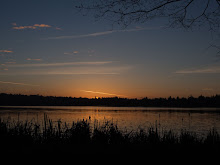In the morning I met the rest of the people who worked at the Center. Miss Harding, the Center administrator, had been the secretary for two previous administrators. After the second one left, Miss Harding ran the Center while the church spent months looking for a replacement. Finally, after a year, they gave up and left the operation of the Center to her. It saved them money, since she was a woman who worked for a secretary’s wages.
When Colin introduced me to Elder Grieve, the head of the Spanish radio and TV ministry, I responded to his greeting with “Mucho gusto.” He immediately launched into animated Spanish with a broad smile on his face.
I spread my hands apologetically. “Lo siento. No comprendo. Hablo muy poquito.”
He laughed and switched back to heavily-accented English.
In the offices of the Nurse’s Registry, I met June Croft. She had gone to nursing school with my aunt decades earlier. She was a curious combination of friendliness and some kind of class arrogance. Because of who I was, I was included. I had the distinct sense of being invited into a separate world, a privileged society quite distinct from the society of her office staff and employees.
The Registry did not place many nurses. Its specialty was home health aides, West Indian immigrants trained right there in the Center by Mrs. Croft and her staff. Mrs. Croft told me “her girls” were the most highly sought-after home health aides in the city. She credited this to her training program and their deep religious faith.
In the basement, I met the staff of the Adventist Book Store and Peter Vandulek and Igor Yanovich who did the maintenance. Peter spoke understandable English. Igor communicated mostly by smiling and nodding.
Mrs. Toby was the receptionist. A tiny, bird-like woman with laughing, bright eyes. She was from Arizona, had been working at the center for six years and loved it. She was working for Jesus. Every person who walked in the front door was an opportunity to share Jesus. She was also fiercely protective of God’s Center. No one got past the lobby without passing her scrutiny.
That evening Colin and I took the subway to Greenwich Village to see my brother. He and his friends had set up a coffee house in the basement of an old Adventist Church on 11th Street. The space occupied by the Catacombs had been a coalery seventy-five years earlier. The entrance was a steep, improvised stairway down the coal chute that opened onto the sidewalk. The floor was dirt. The ceiling was very low. There were tables set helter skelter with candles burning in jars. A bar provided juice and ersatz coffee for people who could afford it.
Arthur introduced me around–couples and individuals, all in long hair, jeans, long dresses, smiling, laid back. Arthur described a conversation he had had just the previous evening. A guy he had met earlier in the day in Washington Square Park dropped in. An agnostic. He and Arthur talked till two in the morning. By the time the visitor left his doubt was diminished; his openness to faith increased. Arthur expected him back this evening.
I was amazed. I couldn’t believe the space. Who would think you could operate a coffee house in the unfinished basement of a church? The fascination of talking every day with hippies about God, spiritual life, the Bible, faith! The romance of doing this together with a group of friends who had all renounced middle class mediocrity and stifling convention.
Since we lived and worked in the Center, it was natural that we attended the Crossroads Church which met in the auditorium there. What a let down! Everyone was pleasant and welcoming. Colin introduced me to three couples, people he had told me about earlier, who were committed to working with him in ministry. But where I had envisioned a street ministry that reached hippies and other young people, Crossroads Church was mostly middle-aged immigrants from the West Indies. The auditorium was dark and oppressive. The pastor was a white man in his fifties, British. When he became intense, his preaching sounded shrill and petulant.
After church that first Sabbath we were invited to Miss Harding’s apartment for lunch. Besides Colin and me, guests included Mrs. Toby and two older White couples who had helped to found the church twenty years earlier. They talked of the original vision behind the name of the church, a congregation at the Crossroads of the world that would communicate the special message of Adventism to thought leaders and influential people. It would be a high-status church that would impress high status people. Now, it was a church of Jamaican immigrants. All of the people around the table lamented the failure of the original dream. They resented the Jamaican take over of the church. If only the Jamaicans would understand that once they comprised a majority of the congregation, White people who visited would feel uncomfortable. It was fine to have some Black people in the congregation, but the immigrant membership grew so much faster than the White membership. Now, it was very difficult to draw White people into the congregation.
In my high school years, I had prided myself on my progressive views on race. I had looked down on my parents for their racism. (And they were far more respectful of Blacks than most other adults I knew in my home town.) Now I had to deal with my own racism. It was not difficult to like the individuals at Crossroads, but I resented having the ethos of my church determined by people stuck in the religious culture of 1950s Adventism–a religious culture taught them by missionaries from the United States, a culture I thought we had outgrown. I wondered how my emotions were colored by the fact that this alien culture belonged to Black people.
Sunday, May 9, 2010
Subscribe to:
Post Comments (Atom)


No comments:
Post a Comment